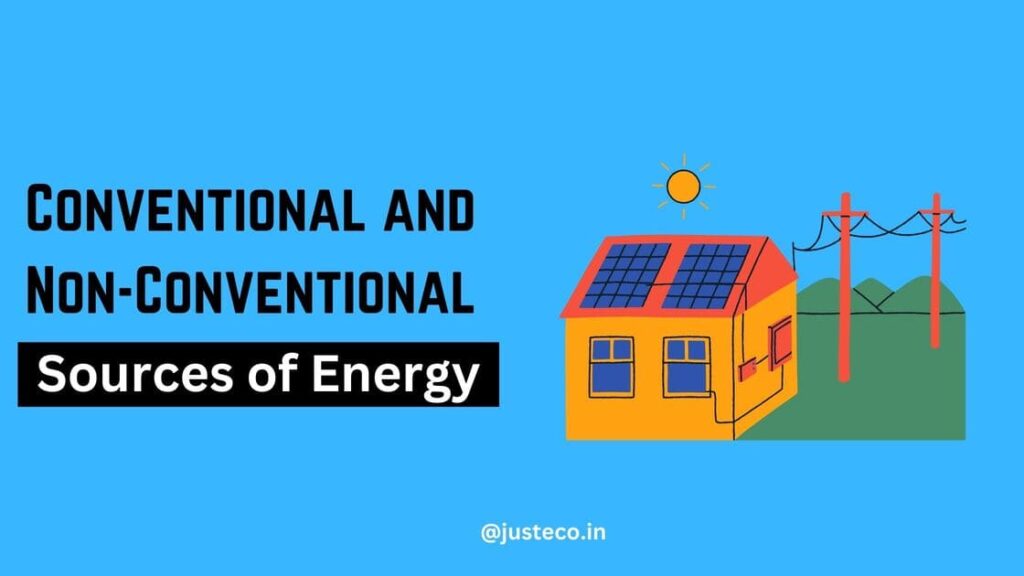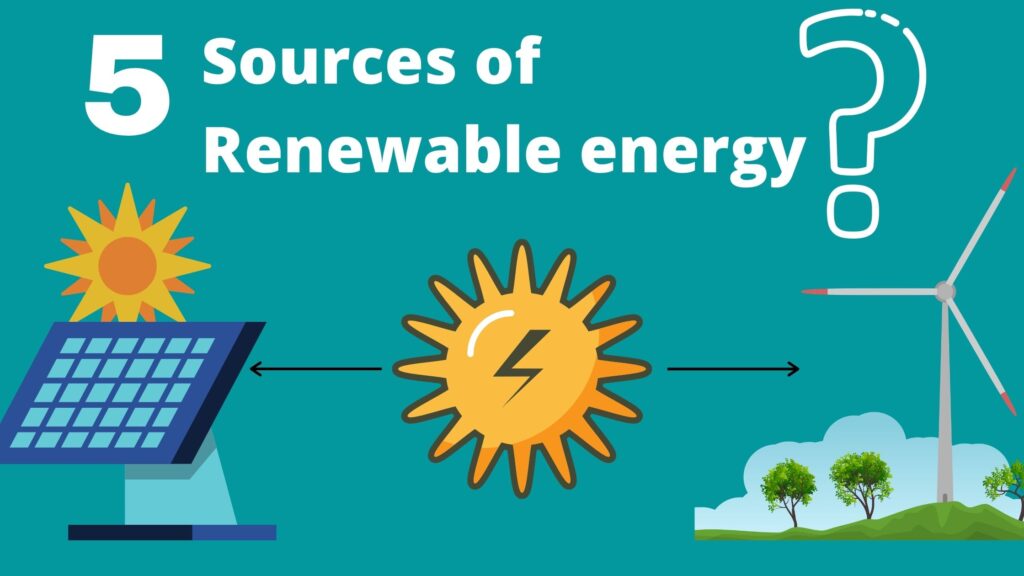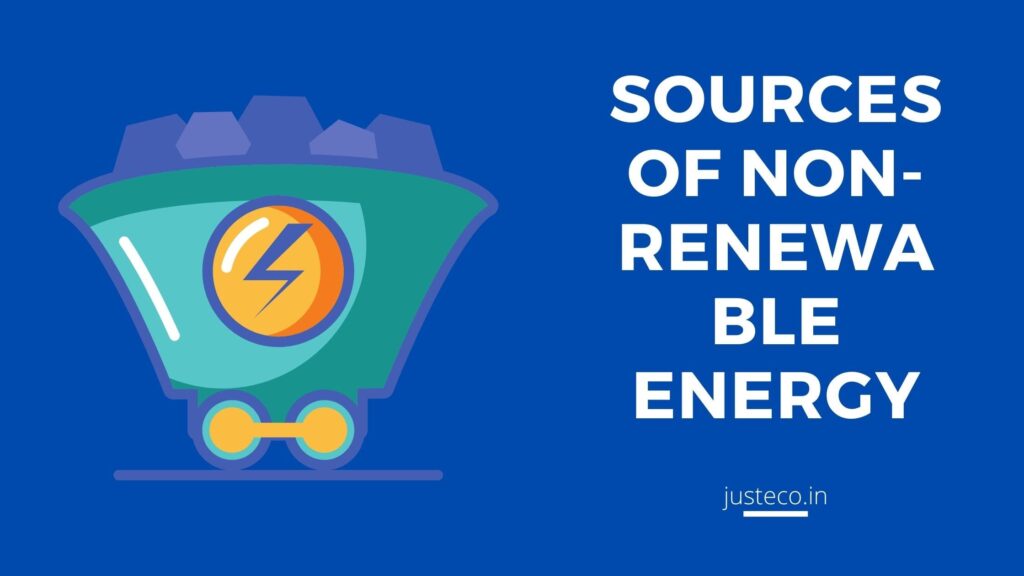In the modern era, we use energy in many ways. When we observe carefully, from morning to night, we consume energy in many forms.
Along with this, the usage of fossil fuels to run bikes, cars, and other vehicles has been increasing daily. Studies have shown that this usage doesn’t support the protection of the environment. Overusing any energy source will cause permanent damage to this earth and can cause natural calamities too!
When you use automobiles unnecessarily, the gases they release into the air cause air pollution and global warming. Too much extraction of petroleum may harm oceans and cause ocean pollution. That’s why it is high time we learn clearly about various types of energy resources and how we can convert them to protect the environment.
Types of energy resources
There are many types of energy present in this world, but they can be classified into two types- conventional and non conventional energy. These energies have sources we can obtain, and they are called conventional and non conventional sources of energy. Before knowing about the sources of conventional and non conventional energy resources, let us know about what is conventional energy and non conventional energy.
What is conventional energy?
The energy formed through conventional sources of energy is called conventional energy. Conventional energy is also called non-renewable energy. This name came because once these energy sources are over, it will take hundreds of years to regain them.
That’s why it is essential to use these conventional sources of energy very carefully. The government is already taking necessary precautions to save these sources, but we need to help in our hands. This can happen if every one of us follows eco-friendly methods in our day-to-day life.
What is non-conventional energy?
Simply put, non conventional energy is the energy that comes through non conventional energy resources. Research has shown that these resources are unlimited and thus have many benefits for future generations.
These can be considered infinite energy resources, and extraction of them or using them doesn’t cause any harm to our environment.
What are conventional sources of energy?
Conventional energy sources or Non-renewable energy sources are limited and will eventually run out of resources. Conventional energy resource is defined as energy that cannot be economically extracted in the long run at a rate that will allow for self-renewal. Examples of conventional sources of energy include uranium, coal, crude oil, and natural gas.
Contrary to non conventional energy, non-renewable energy needs human assistance to be utilized.Let us look at a few sources of conventional energy.
1. Coal:
Coal is a sedimentary rock that forms in seams and is either black or brownish-black in color. The dead plant matter is transformed into peat over millions of years by the heat & pressure of deep burial, which is then converted into coal over millions of years.
Coal can be used in many ways. Coal is India’s most frequently used fossil fuel, and it provides a more significant part of the nation’s energy needs.
Depending on the levels of compression, the depth, and the length of burial during its creation, there are various varieties of coal. Let us look into those types.
- Peat: Peat is a product of the decay of plants in wetlands. It has a low carbon concentration, a high moisture content, and a modest heating capacity.
- Lignite: Brown coal of low quality is called lignite. It is soft and contains a lot of moisture. It produces electricity. There are large lignite deposits in Neyveli, Tamil Nadu.
- Bituminous: The most popular type of coal used in industry is bituminous and can only be accessible at greater depths. High-grade bituminous coal is useful in metallurgy. In blast furnaces, it is beneficial for melting iron.
- Anthracite: The Appalachian mountains contain vast anthracite coals in the eastern United States. This is very hard coal and has the highest position in hardness among other types of coal. In parts of the world where there have been significant earth movements, such as the formation of mountain ranges, anthracite can be found.
2. Petroleum:
Petroleum is nothing but crude oil, which can be extracted in liquid form. It is the only conventional energy resource we can find in liquid form. It is extracted by drilling a vertical well into the ground or ocean floor; it is situated between rocks or between layers of the earth’s crust. After being refined at a facility and used to create a range of products, the crude oil is subsequently pumped to the surface.
To make gasoline, half of the world’s petroleum is consumed. The remainder can be processed and used to make solid products like water pipes, shoes, crayons, roofing, vitamin capsules, and several other things, as well as liquid products like nail polish and rubbing alcohol.
3. Natural gas:
Along with crude oil deposits, nonrenewable gaseous resources such as natural gas can be found beneath the earth’s crust. Methane makes up most of the natural gas but can also contain propane, ethane, and butane. Since methane has no smell, it is mixed up with a specific chemical to give it a scent so that leaks can be found. The propane and butane used to create liquefied petroleum gas are taken out of natural gas and transported to processing facilities.
In addition to being used for home heating, natural gas is also used in gas ovens, stoves, and barbecues.
4. Electricity:
Electricity can be one of the conventional and non conventional sources of energy, depending on the resource utilized to produce it. Electricity must be created and purified in electrical power plants using other energy sources. Processing facilities that burn fossil fuels frequently “produce” power in exchange for the fuel they burn. Coal, oil, or gasoline are examples of non-renewable, constrained energy sources that power the electricity-generating turbines. Electricity can be produced via non conventional energy resources like solar, wind, and geothermal energy. You can also use solar power by using different types of solar panels.
Electricity can be produced in two ways.
- Thermal electricity: The combustion of fossil fuels such as oil, coal, natural gas, and others produce thermal electricity, which is used to power turbines. Thermal power plants use fossil fuels and other non-renewable resources to produce electricity.
- Hydroelectricity: The flow of water generates hydroelectricity.
These projects, which serve several purposes, include Bhakra Nangal, Damodar Valley, and the Kopili Hydropower Project, among others, and are a significant source of this pollution-free, Environmentally friendly energy in India.
5. Wood fuel:
One of the most common energy sources for those living in rural areas is fuelwood. They use wood for daily tasks like cooking, heating water, and other things. However, burning wood as fuel has the drawback of causing deforestation, which is hugely detrimental to the ecosystem.
6. Nuclear energy:
Nuclear energy is the cleanest form of energy production. It utilizes a procedure known as nuclear fission, which entails the division of an atom into many pieces. A significant quantity of energy is released during the splitting of atoms, and this energy can be exploited to create electricity. Utilizing nuclear energy has the benefit of being reliable and environmentally safe.
What are non conventional sources of energy?
It is the complete opposite of energy produced by limited fossil fuels. These resources can produce renewable energy. A natural resource that replenishes depleted or utilized resources through natural reproduction or repetitive processes within a predetermined time frame on the human time scale is referred to as renewable. Let us look at various types of non conventional sources of energy.
1. Solar energy:
Since the dawn of time, solar energy has been the most accessible and cost-free source of energy. Solar thermal and solar electric methods are the two ways solar energy can be used. The solar thermal pathway uses the heat from the sun to cook food, and dry goods, produce hot water or air, etc.
Solar photovoltaic systems utilize the heat from the sun to create energy that can be used to power motors, pumps, electric appliances, and lighting for homes and other buildings. Solar thermal devices, sometimes called solar collectors and receivers, are used in the solar thermal route to transform solar energy into heat energy.
Also Read: How To Conserve Energy: 22 Effective Ways
2. Wind energy:
Utilizing wind energy essentially means using wind energy to generate electricity. The kinetic energy of wind is transformed into electrical power. Windmills and wind turbines exploit airflows to generate electricity. With improved technology, wind power may now be used to produce electricity on a greater scale.
3. Bio energy:
Biogas, a form of bio-energy produced from biomass, is one of the primary energy sources for global sustainability. A renewable energy source, biomass is created from the carbonaceous waste left over from different human and natural processes. Its benefit is that it can create energy using the same machinery that is now being used to burn fossil fuels. Cooking, mechanical uses, pumping, electricity generation, etc., all need bioenergy.
4. Hydro energy:
The beginning of the industrial revolution was driven by waterwheels, which harnessed the potential power of flowing water and turned it into mechanical energy. Rivers and large streams were dammed, and mills were constructed wherever there was a sufficient head of water or an elevational change. Pressured water passes through a turbine, spinning it. An electrical generator that is attached to the turbine generates power.
5. Ocean energy:
Two different sources of energy are present in the ocean: thermal energy from the heat of the sun and mechanical energy from the waves and the tides. There are numerous uses for ocean thermal energy, including electricity production. Electricity conversion systems come in three varieties: closed-cycle, open-cycle, and hybrid.
Closed cycle methods evaporate a fluid with a low boiling point using the ocean’s warm surface water. The vapor’s expansion turns into a turbine. To generate power, the turbine then turns on a generator.
Open-cycle systems operate at low pressures to boil the seawater, generating steam that flows via a generator or turbine. Both closed-cycle and open-cycle systems are combined in hybrid systems.
Ocean thermal energy and ocean mechanical energy are very different. Although the sun impacts all ocean activities, the moon’s gravitational pull mainly determines tides, and winds primarily determine waves. Tidal energy is often converted into electricity using a dam, which works by forcing water through turbines to start a generator.
6. Energy from wastes:
Electricity can be produced using wastage. In India’s urban areas, an estimated 50 million tonnes of solid trash and 6,000 million cubic meters of liquid waste are produced yearly. India has a significant opportunity to generate 2,600 MW of electricity from municipal and urban trash and 1,300 MW from industrial wastes, respectively. Only 1.8% of the available potential has been used in the country. If we use this method in a maximum way, we can see zero wastage around our country.
Which is best between conventional and non conventional energy?
As energy consumption rises, the population’s reliance on coal, oil, and gas sources grows daily. The necessity to ensure the energy supply for the future arises from the cost of gas and petroleum increasing with each passing day. Therefore, we must use an increasing number of non conventional energy sources.
Conclusion
Any nation’s ability to sustainably build its economy depends heavily on the strength and stability of its energy sectors. People should carefully use conventional energy resources only when necessary, and we need to use non conventional energy resources whenever we can. This not only helps us save the non renewable energy sources for future generations but also helps save our environment.




